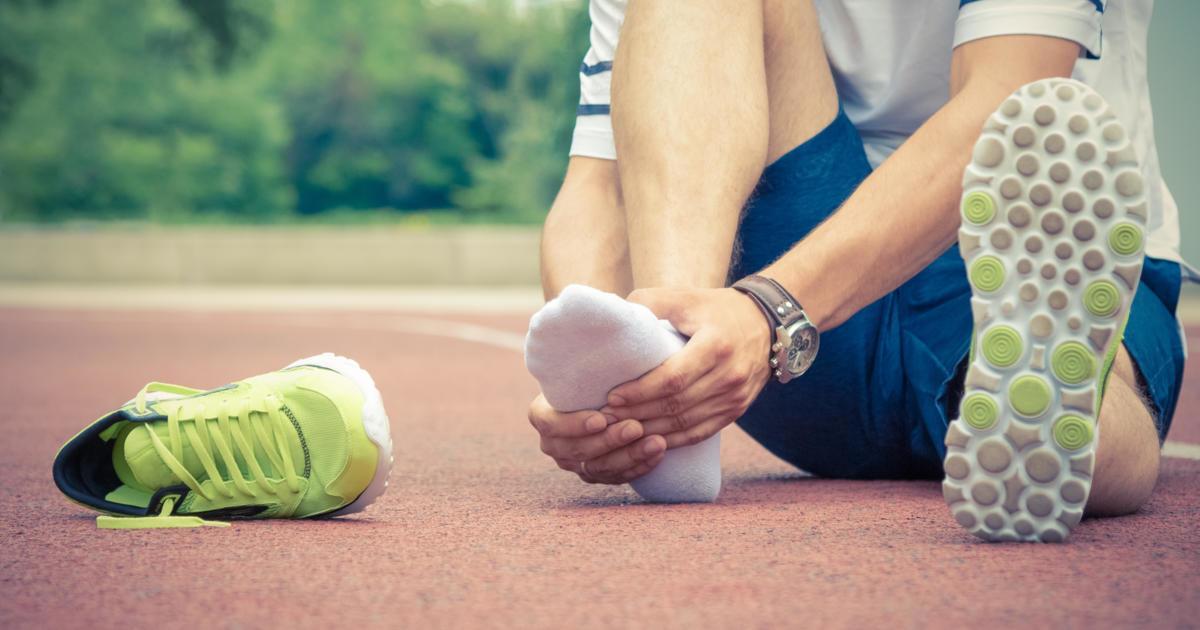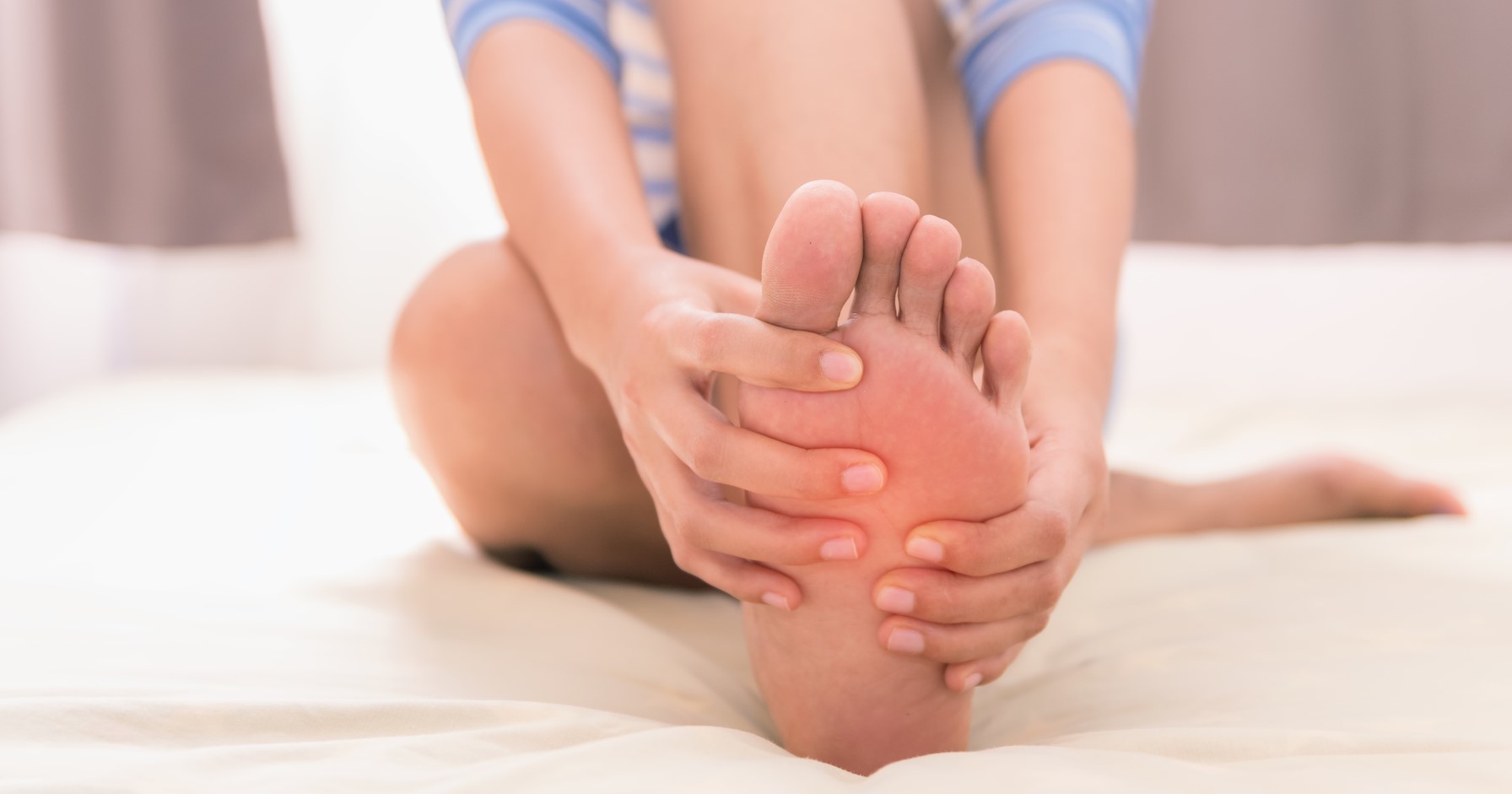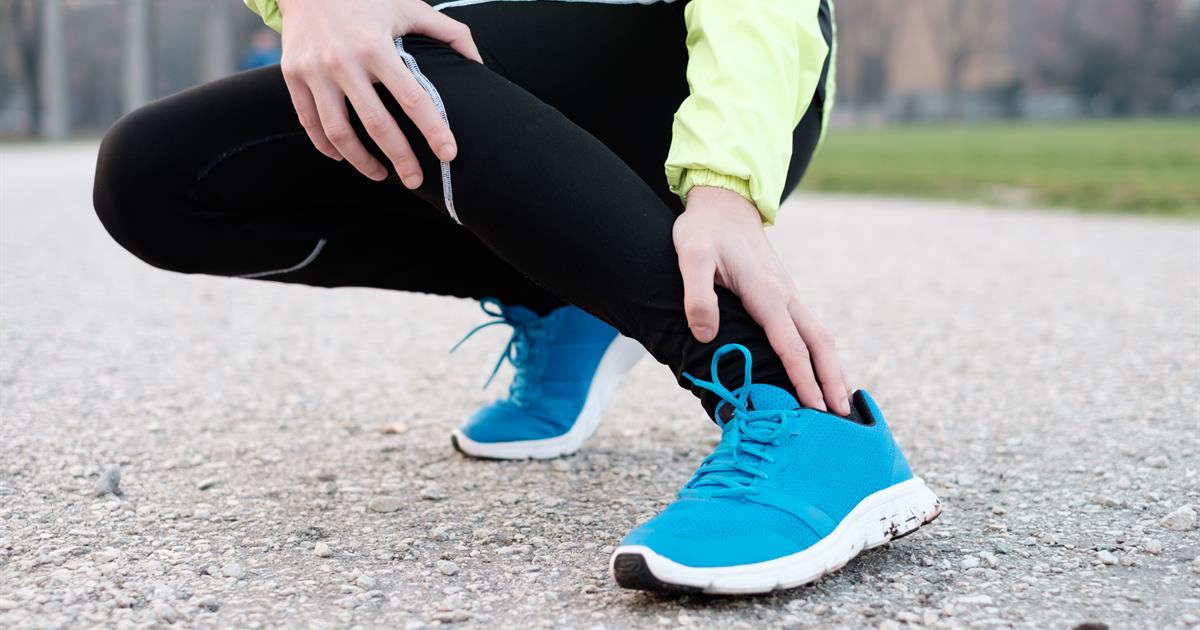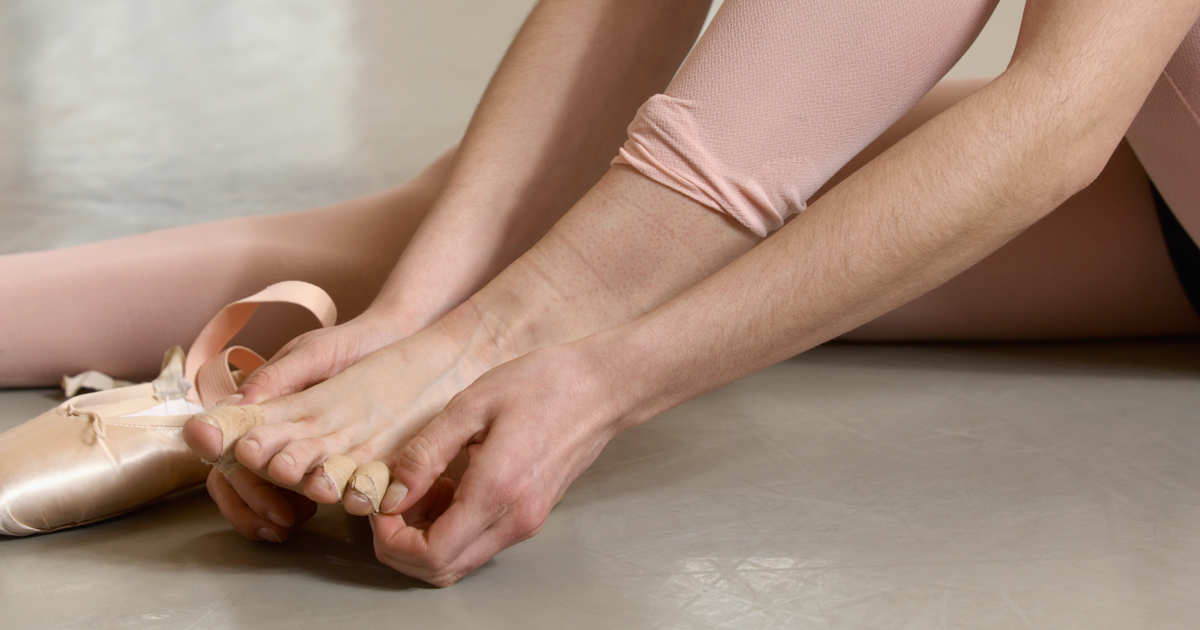How To Spot Sesamoiditis
Sesamoiditis is a particularly painful foot condition that involves inflammation of the tendons around the sesamoid bones. Unlike most bones, the sesamoid bones are not connected to other bones but are instead connected to tendons or embedded deep within muscle tissue. The largest sesamoid is the kneecap, and there are two other sesamoids located on the bottom of the forefoot (ball of the foot) at the base of the big toe. These sesamoids are each estimated to be the size of a corn kernel, and one is on the outside of the foot. The other is located towards the middle of the foot. Since it is caused by inflammation of the tendons around the sesamoids, sesamoiditis is classified as a form of tendonitis. Like many cases of tendonitis, this condition is especially common in runners, joggers, ballet dancers, and baseball players, all of whom place great strain on their feet. The following are symptoms of sesamoiditis.
Bruising

Bruising can occur with sesamoiditis; however, many individuals who have been diagnosed with the condition do not experience this symptom. When bruising is present, it is often very mild. To help bruises heal, patients should try to cushion the area of the bruise with padding, and avoid tight shoes or other sources of friction around the site. Ice packs or cooling gels can ease the pain from bruises. If using an ice pack, always wrap the ice in a towel or plastic bag, and leave it on the area for no more than twenty to thirty minutes at a time. A compression bandage may help support the foot as well. Doctors also recommend resting and elevating the bruised site with a pillow or cushion. Some patients find arnica creams or other ointments help to dull the pain from the bruise. A doctor should be consulted if a lump forms over the bruise as this is indicative of a hematoma.
Keep reading for more information on spotting sesamoiditis.
Swelling Around Affected Site

Swelling around the affected site is sometimes associated with sesamoiditis, but it is not present in all cases. Also known as edema, swelling is typically accompanied by redness and warmth at the site, and can lead to an increase in pain. It is especially important to rest and elevate the foot and avoid wearing high heels or other shoes that stress the area to reduce swelling. Flat shoes are suggested to help alleviate pressure on the foot so swelling does not increase. In particular, ballet shoes and cleats can be especially harmful when swelling is present. Ice packs can help reduce swelling, and these should be applied for twenty to thirty minutes at a time. Some patients find the use of a foot bath can help soothe symptoms. Patients should monitor the amount of swelling they are experiencing and should consult a doctor if the swelling continues for more than two days, particularly if it grows in size or if redness worsens. Steroid injections given by a doctor are sometimes used to reduce swelling.
Learn more about how to spot sesamoiditis now.
Limping Or Shifting Weight On Foot

The pain associated with sesamoiditis causes many patients to walk with a limp or shifting weight on foot. Naturally, these gait abnormalities can make it difficult for the patient to engage in sports or even in normal daily activities, and they may increase the likelihood of falls. Since limping or shifting weight on the foot may be signs of a more serious condition or may indicate additional foot problems, an orthopedist or another doctor should properly evaluate these symptoms. During the appointment, doctors will ask about how and when the injury occurred. Doctors will examine the patient's affected foot and toes and compare it with the unaffected side. They may also examine other areas of the lower limb, including the ankle, knee, and hip to rule out different conditions. Patients will likely be asked to walk so the doctor can observe the limp and any other abnormalities in the patient's overall gait. Following a gait evaluation, physical therapy may sometimes be recommended to restore normal function, fluidity, and strength in the foot and gait. Physical therapists can suggest a series of exercises to build endurance in the toes and foot. One common exercise called marble pickups involves picking up a marble between two toes and placing it in a cup.
Discover more symptoms of sesamoiditis now.
Difficulty Moving The Big Toe

With the sesamoid bones being located just underneath the big toe, difficulty moving the big toe is a major symptom of sesamoiditis used in diagnosing the condition. Sesamoiditis patients may have difficulty bending and moving the big toe up and down and side to side. In particular, pain may be intense when trying to move the toe upwards. A clinical examination by an orthopedist can help determine the cause of these movement difficulties. During the exam, the orthopedist will touch the sesamoid bones and toes to check for swelling, discomfort, and pain. They may also bend the toe or ask the patient to try to bend it, paying particular attention to whether there is more pain when the toe is in an upward position. The painful side will be compared against the unaffected side. The doctor will order x-rays of the foot to check the sesamoid bones are not fractured to confirm sesamoiditis. An x-ray of the unaffected foot may also be taken to assess bone structure, and in some cases, a bone scan may be needed to obtain further information and confirm the diagnosis.
Get to know more about the various symptoms of sesamoiditis now.
Dull And Recurring Pain

The onset of pain with sesamoiditis is typically gradual, and many patients may have only mild pain. Severe and sudden pain is typically more suggestive of a sesamoid fracture. To help reduce pain, doctors recommend reducing the activity that caused the pain if possible. Taping the big toe in a slightly downward position using medical or sports tape can sometimes help in pain management. Doctors recommend using foam or felt cushions placed directly underneath the big toe and around the area of pain to redistribute the weight of the foot. Patients should return to their ballet or other sports activities gradually and continue wearing foam pads placed underneath their sesamoids during this time to reduce the chance of recurring pain. In some cases, orthopedists may recommend patients wear a removable device known as a short leg fracture brace on the area for four to six weeks. For cases where dull and recurring pain cannot be resolved with conservative treatments, surgery to remove the sesamoids may be an option.